Hello,
I'm glad you could stop by this morning. What a treat it is to have visitors from The Tulip Patch.
Today is the first in a series of Saturdays when Mary of The Tulip Patch is hosting "Shout Out Saturday". I am her first guest. How awesome is that?! Thank you Mary for having me. If you haven't been there already, take a moment to go visit her. You can learn a little about me....and get some tips on long arm quilters. As an addendum to that information I've created a little, minuscule, pictorial tutorial on what it is those mystical beings do to your quilts.
It all starts here. This is my long arm machine....it is a Gammell Optimum with a Statler Stitcher. I call it Waldorf. All long arm machines are basically long necked sewing machines. They work the same way a domestic machine does. What is different is the way the fabric gets moved through it.
When you free motion quilt on a domestic sewing machine (a skill I do not possess) you move the fabric. The machine sits just where it always does and you do the work normally done by the feed dogs. The quilt has to be basted before hand and rolled or folded so that it will fit through the neck of the machine so you can work on the middle of the quilt.
On a long arm the pieces of the quilt are secured on a big table and the machine is moved around.
Tables are usually between 10 and 14 feet long. Mine is 12. The length of the table limits the size of the quilt that can be quilted on it. The shortest side of a quilt has to be less than the length of the table in order to mount the top. This isn't usually a problem....a king sized quilt is approximately 108"x95". A twelve foot table is 144".
Every table has three winding rods. There is one to hold the quilt's top; one to hold the backing; and one to hold the completed quilt as it is taken up. The top and the backing are attached to fabric leaders that are attached to the rods.
At the front of every table is a bar. This is the front most edge. The top, back, and batting all pass over it before they are quilted. The "belly bar" serves as a fixed, and straight reference point for the long arm quilter. It also keeps everything nice and flat.
Quilts are also secured at the sides. Long, straps of velcro extend from the sides of the table to the backing material. These straps have big clips on the end of them. The clips are fastened to the backing and batting and keep it taught from side to side.
When a quilt is properly mounted on the table it isn't going to go anywhere. It is taut, but not so tight that you could bounce coins off of it. My cats think it makes a lovely hammock, and it probably does if you only weigh 7 pounds. I discourage their use of customer quilts in this manner.
Sometimes they sneak past me.
Thanks for stopping by....and have a great day.

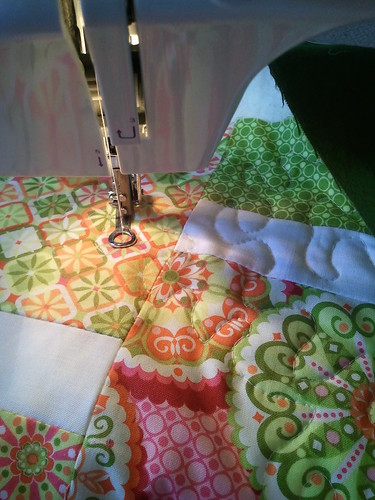
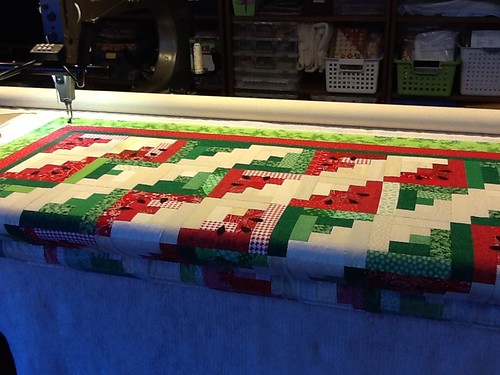
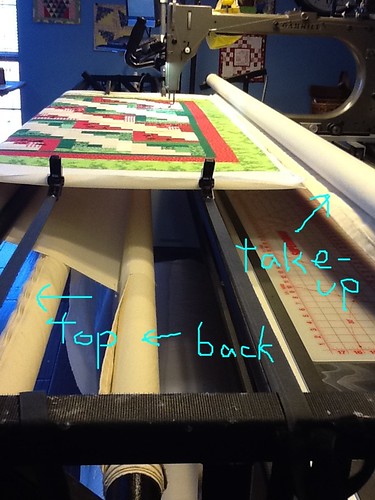
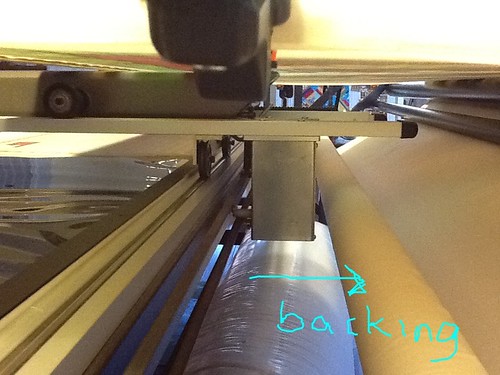
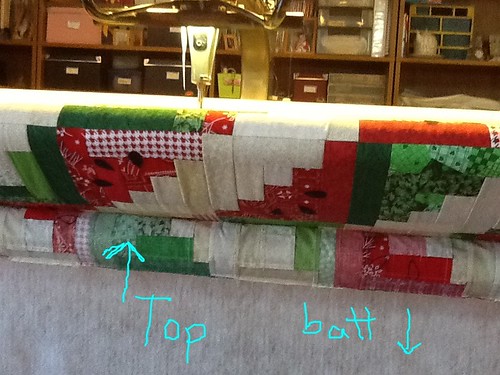
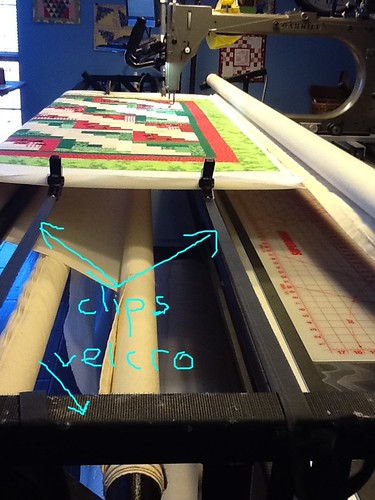

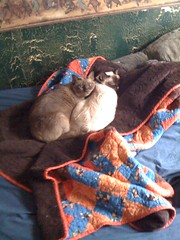

4 comments:
Fascinating post - thank you!
What a great description - thank oyu.
I am hoping to have my first play on my new-to-me Inspira quilting frame today!
That was very interesting! Thank you! I have never seen a machine like this in person. Maybe next time i'm in the states I'll go find one and check it out. The kitties are too cute. It's so easy to forget about all that hair when they look so cute all curled up!
Hey, I stopped by from 'Shout out Saturday'. I'll be featured one of these days when I figure out what to write about. I'm a hand quilter. I took several classes to learn machine quilting, but, I just can't do it. I have tried long arm machines, and I love them, just can't afford the cost. I can move the machine, just not the fabric.
Post a Comment